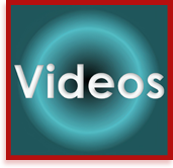
USE MOTION AS A LEVER: BECOME A SCIENTIST OF VISUAL IMPROVEMENT
p>It’s easy enough to make a visual device—or borrow an idea for one from something you saw in a book or at another workplace. Reproducing other people’s ideas (as long as you say thank you) is a positive—and it can keep you going for a while. But not for very long. Unless you are a natural-born visual thinker (and they are very rare), you are going to run out of ideas—yours and everyone else’s. And when you do, you will probably give up on the goal of creating a highly-functioning visual workplace simply because you can’t think of any more ideas for devices. Tsk.
It doesn’t have to be that way. Not if you become a scientist of visuality and learn how to think visually. To do that, you have to be able to spot information deficits—missing information from the workplace. But that is often a challenge because the workplace gets so overrun with missing information that it looks like business as usual. You are busy chasing down info, but you Time it, the reason is clear: work means moving and adding value.
“What am I going to do about that? What can I do? It’s so hard to see information that is missing.” Yes, you are right. So you better go hunting for what you can see: hunt for the symptom of missing information. Hunt for motion.
Motion means: moving without working. Here’s a sample: wandering, wondering, searching—and anything you have to do again: re-work, handling/handling again, counting/counting again, checking/checking again (these last two are motion to begin with…so if you are doing them again, you really really in deep-do motion).
Motion is not elective. You have to do it or you cannot do your work. But it is not work. In fact, motion is work’s polar opposite. But you have no choice: You must do it in order to get back to your work. That is why, to new eyes, motion looks so ordinary, hardly worth a mention. Harmless. But it’s not!
Motion is destructive, eating up our work day and our work life. Motion is like death by ten thousand cuts—dozens of tiny daily transactions we are forced to undertake just to get to the starting line of our work – or just to get back to the work itself. Not just today, but every day. Not just this month but every month. It is a numbing experience.
Time is the shadow of Motion
My sensei, Shigeo Shingo (co-architect of the Toyota Production System), used to say: Time is the Shadow of Motion. Tic Toc. Tic Toc. The clock is always ticking. It ticks when we work. It ticks when we are not working—when we are in motion. Either way, time—our most precious resource—is consumed. How do you want to spend it?
The easiest way to spot information deficits is to spot the motion they trigger. And the easiest way to spot motion is to notice questions—the questions youask and the questions you are asked (the ones you answer). Yes, questions are the doorway to workplace visuality because questions are the by-product of information deficits. Motion instantly tells us where the missing answers are.
Once you notice them, a flood of visual devices are only a hair’s breath away. Spot the missing answer—and then create a device that imbeds that answer in the living landscape of work. Whamm! That info deficit goes away—along with the motion that is triggered (asking/answering questions). In its place is a visual device that speaks, holding that specific answer the next time you need it—so you never have to answer that question again and no one else ever again has to ask it.
This is why I say: Become a scientist of visual improvement and learn to use motion as a lever. Use it as a blade to lift the hard edge of busy-ness and see it for what it is: not work. And if it is not work, it must be motion. Use motion to SEE—to pinpoint information deficits.
Motion is the plague you don’t even notice—until you learn how to look for it and how to find it. Then you will see it everywhere. When you learn to use motion as a lever, suddenly you have a seemingly limitless resource for creating visual devices. That is also why, when visual devices replace missing answers, we can truly hear and see the workplace speak—and it speaks with a voice that is our own because we became scientists of motion.
Based on material from Dr. Galsworth’s weekly radio show, The Visual Workplace. Podcasts on: www.visualworkplace.com . Click here to listen




